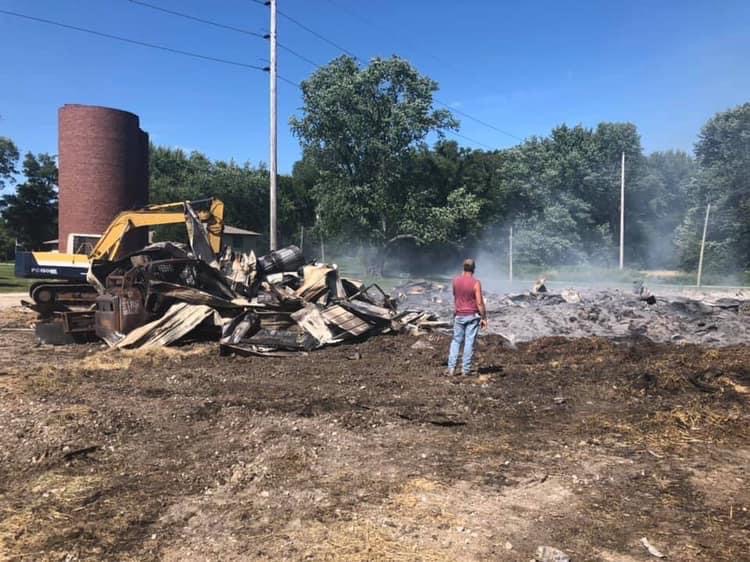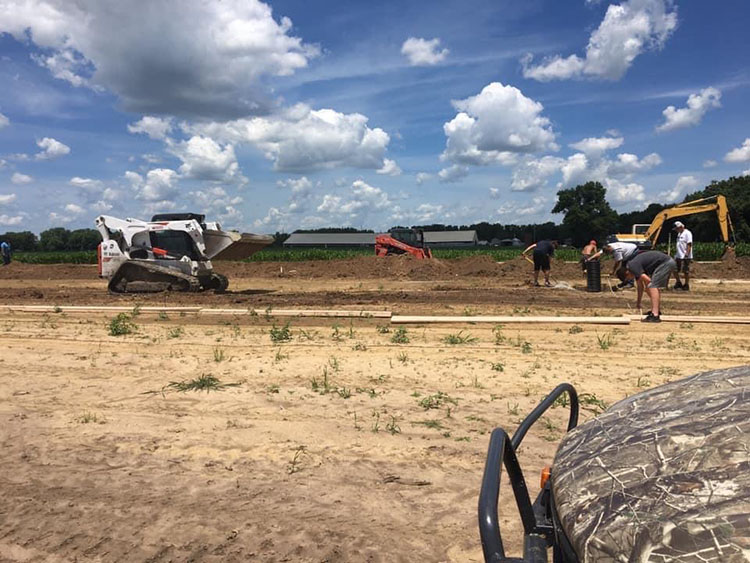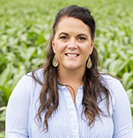
A year can go by at record speed, or at least that is how it has felt this past year. Often days and nights intertwined, and somehow, the seasons flew to the next without us having much time to hit the pause button. I'm sure many of you can relate.
On July 9, 2019, our life divided into what we now view as our before and after. We woke to an urgent call in the middle of the night, learning that our heifer and commodity barn was on fire. The minutes that followed nearly dropped me to my knees, and I honestly felt like I would never, ever stop smelling smoke. Through the grace of God and good people offering a helping hand, we managed on. The uncertainty in the eyes of the older generations made the younger generation more determined and devoted to help out, and I tried to use that to navigate the days that followed.
Rebuilding two barns is no small task. The commodity barn went up this past fall, and that was fairly easy to put together. The insurance money basically went to cover that barn. It has become my husband's happy place to mix feed each morning in a barn that has the room and ceiling height to handle all of our commodities.

The heifer barn wasn't as easy to put together. First off, it was not a big priority for us before the fire. We had other "wants" that needed to get done first. But, when you lose a home for 200-plus heifers and pay a monthly bill to have them custom fed elsewhere, priorities shift. At least, for us they did.
Many meetings around my kitchen table unfolded. Conversations about security finances and talking about long-term goals happened but were not easy. To be completely honest, it is difficult to think a decade down the road with the uncertainty the dairy industry has been under.
Once we had the finances secured and decided on the best heifer barn design for us, COVID-19 hit and everything took a big pause. With cheese blocks trading at $1.00 this spring, we often questioned what the fate of our dairy was. With everything on shutdown, including our state capitol building which decides the fate of our building permit, we really had nothing to do but be patient.
It was easy to get discouraged with bare ground that showed no progress. Despite the added obstacles, we had to focus on our whys, and we let that fuel us with a resilience that is required to make it as a dairy farmer.

Thankfully, the last few weeks, smiles have been stretched and attitudes have improved for all here at Bohnert Jerseys. The smoke no longer lingers from a year ago, but the scene of flames will never be erased from our memories. What has grown from that ill-fated morning is a deeper commitment by three generations of Bohnerts to take care of our beloved Jersey cows.
Farmers, like my husband, Scott, have to be firm in their faith and steadfast in their will to be reminded of what was and also have faith in what will be. This faith has always been our anchor, but especially the past 365 days.

Karen Bohnert is a second-generation dairy farmer, born and raised on her family dairy in Oregon and moved east after graduating from Oregon State Univer-sity. Karen and her husband work in partnership with family, and they along with their three children live and work on the family's 500 Jersey cow dairy in East Moline, Ill. Karen's pride and love for dairy could fill a barn, and she actively promotes dairy anyway she can.